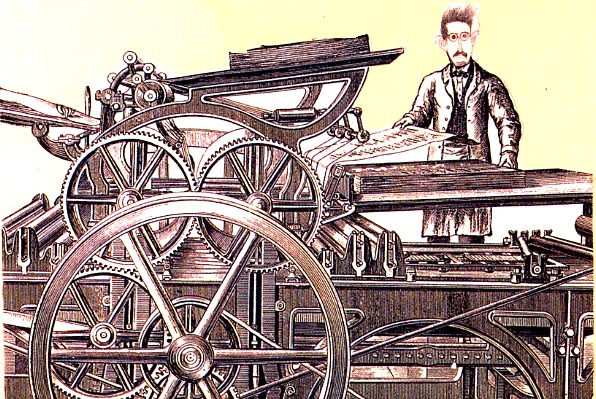What is our present? What is the
present field of possible experiences? This is not an analytics of truth; it
will concern what might be called an ontology of the present, an ontology of
ourselves, and it seems to me that the philosophical choice confronting us
today is this: one may opt for a critical philosophy that will present itself
as an analytic philosophy of truth in general, or one may opt for a critical
thought that will take the form of an ontology of ourselves, an ontology of the
present…
At the risk of responding heedlessly, I venture that our present is defined by the humanitarian pleasure principle. We live in
an age of drone aesthetics – every grain of geographic space, every gesture of
lived reality, every click of pleasurable association records and cites a
historicized datum of our contemporary mode of existence. The mediated flow of
images flourishes while the world passes away.
Consequently, those who resist or
rebel against a form of power cannot merely be content to denounce violence or
criticize an institution. Nor is it enough to cast the blame on reason in
general. What has to be questioned is the form of rationality at stake…The
question is: how are such relations of power rationalized? Asking it is the
only way to avoid other institutions, with the same objectives and the same
effects, from taking their stead.

We sit idly trapped in the muddied trenches of an uncanny
valley – a horizon of existence bereft of the eternal gloss of the nation
state, the species, religion and republic. The variegated spectrum of forms by
which political associations and ethical commitments take place has outstripped
the potentiality for the taxonomic nodes to retain their positions as
meaningful referents. When politics is reduced down to a distracted display of
public affiliation, the capacity for change becomes impotent.
The
Kony 2012 Campaign which has recently gone viral offers
a keen case study evincing the means by which the politics of humanitarianism
short circuits the perceived necessity of, the capacity to, and the desire for
a reflexively engaged ethico-political constitution of the global citizen.
Right now there are more people on
Facebook, than there were on the planet 200 years ago. Humanity’s greatest
desire is to belong and connect. And now we see each other, we hear each
other…we share what we love and it reminds us what we all have in common… (Kony2012)

The video begins with a self-conscious introduction of its
place within the interconnections of a globalized world. There are literally
thousands of videos out there which make appeals to ethical causes and which
comment on the opportunities for new social movements – why did this one
succeed?
It can’ t merely be that more people simply believe in or
agree about this cause. It seems to me that it is definitively rooted in the
aesthetics of the campaign. Yet it also reminds me of
Walter Benjamin’s observation
that the aura’s present decay is linked to “the increasing significance of the
masses in contemporary life” (255).
The
desire of the present-day masses to “get closer” to things spatially and humanly,
and their equally passionate concern for overcoming each thing’s uniqueness by
assimilating it as a reproduction….The stripping of the veil from the
object, the destruction of the aura, is the signature of a perception whose
“sense for sameness in the world” has so increased that, by means of
reproduction, it extracts sameness from what is unique (255-6).
The introduction’s statement that, “Humanity’s greatest
desire is to belong and connect" performs, analyzes and describes the process
by which the increasing significance of the masses is linked to the desire to
overcome uniqueness. To reproduce the work of art through the youtube film
means to merely share it; the work’s reproduction coincides with its
consumption. Thus the dynamics of the artwork’s aura have reinvigorated their
original ritualistic association.
As Benjamin writes:
The
unique value of the “authentic” work of art has its basis in ritual, the source
of its original use value.
Markers of the viral-ity of the video, the display of
the statistics of views, analytics, data etc…express the thoroughness of “the
interpenetration of art and science” in the age of technological
reproducibility. The ritual is disclosed through the knowledge of the commonality
of viewership which simultaneously endows a video with a cult like magic, while
depressing any semblance of uniqueness inherent in the act of consumption.
The video then proceeds to show a scene of a person who ‘hears’
for the first time as the result of a cochlear implant. In seeing another
person learn to hear, we learn to see hearing differently, and hear different
things than were previously possible. The film discloses a world of scenes and
gestures contained within our everyday movements that were previously unknown. Film calls for our attention and analysis because it more precisely documents the
gestures of the body, through slow motion time is extended, through the
juxtaposition of images new associations emerge, through the procession of
angles new viewpoints and understandings of positionality are created and so
on.
Photographic records begin to be
evidence in the historical trial. This constitutes their hidden political
significance. They demand a specific kind of reception. Free-floating
contemplation is no longer appropriate to them. They unsettle the viewer; he
feels challenged to find a particular way to approach them.
Watching the cursor click share leads to an instinctive, mimetic desire to also share the video, perceptions and understandings of the video are changed in the act of consumption itself.
“The world is changing…the rules of the game have
changed…the next 27 minutes are an experiment, but in order for it to work you have
to pay attention" (Kony 2012)
“[T]he audience is an examiner, but a
distracted one” (Benjamin).
Labels: Audience theory, cyber rhetoric, humanitarianism, Joseph Kony, Kony 2012, Michel Foucault, New Media, ontology, P, Walter Benjamin, Work of Art in the Age of Technological Reproducibility













